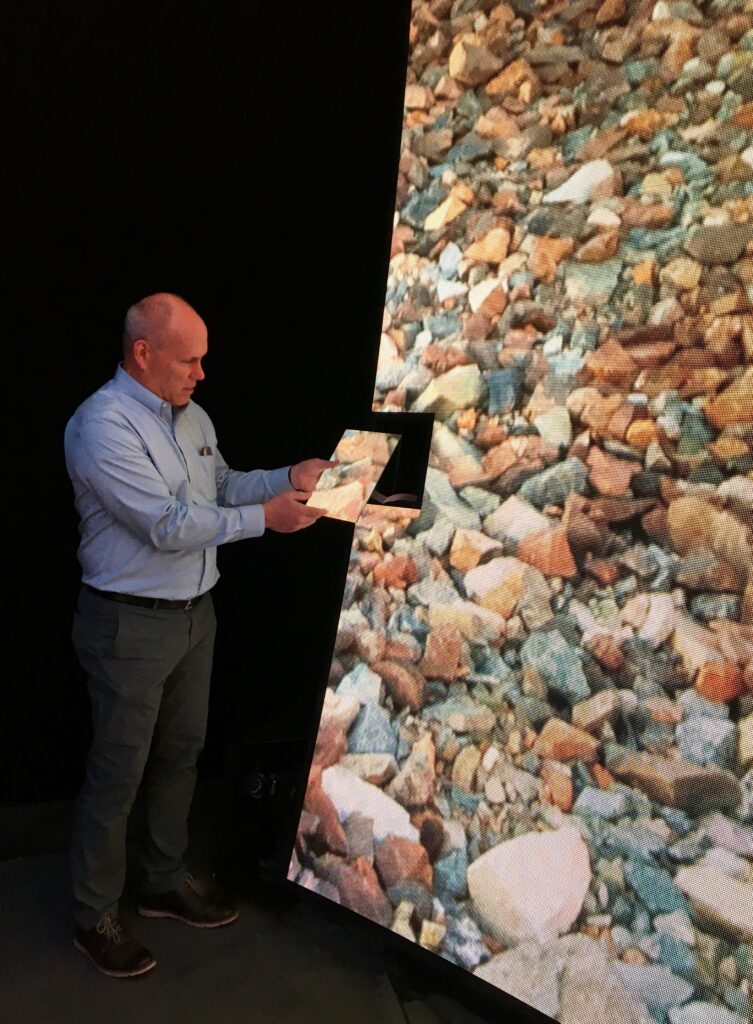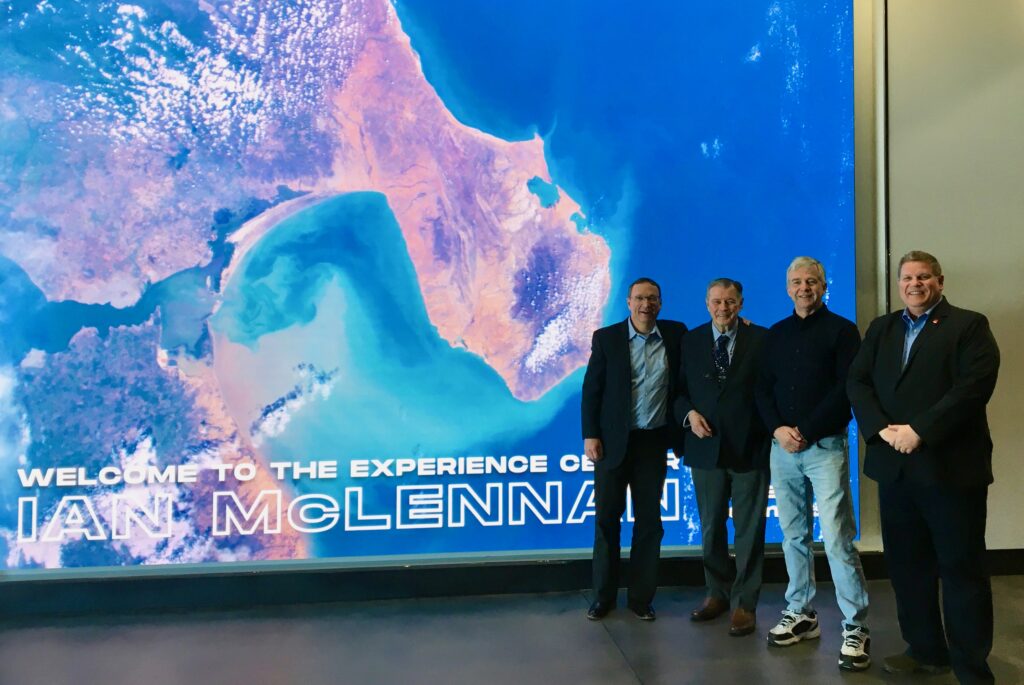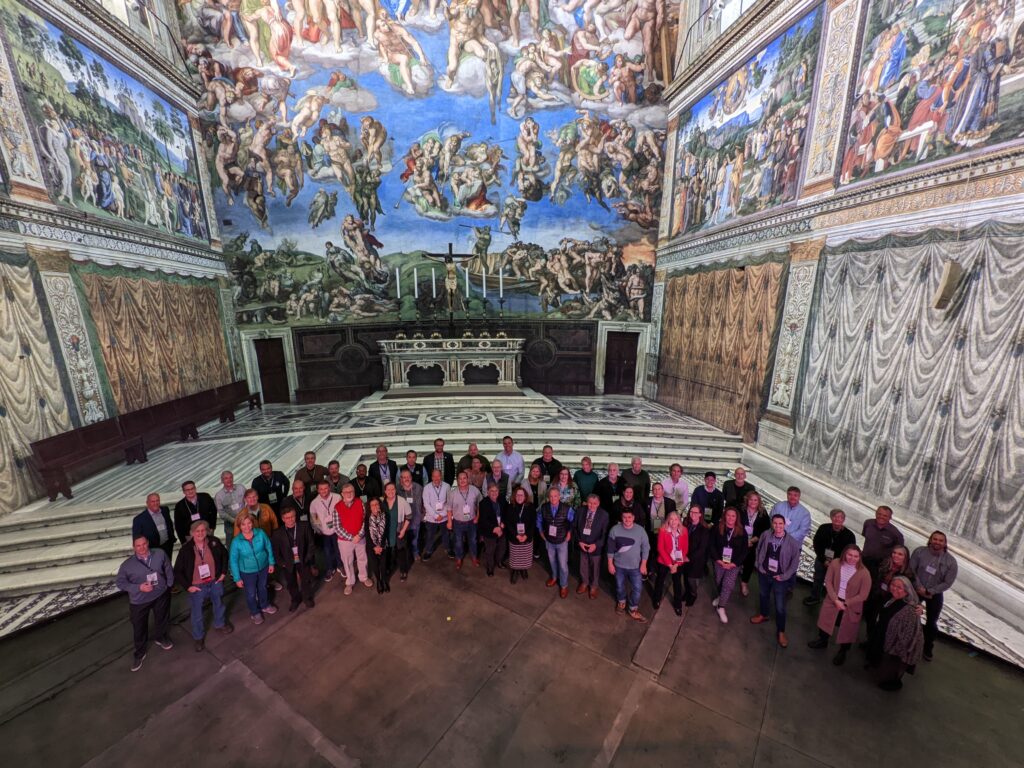More than a decade ago, InPark began its exploration of fulldome technology when giant screen filmmaker Bayley Silleck contributed an article on the evolving nature of digital domes. On March 10 of this year, delegates from the Giant Screen Cinema Association’s Film Expo were hosted by Cosm and its subsidiary E&S at its Cosm Experience Center, located in Salt Lake City, Utah to experience the next evolution in digital domes – the LED dome (the Cosm product is branded as CX Display). InPark asked Ian McLennan, a pioneer in giant screen cinemas and planetaria, whose credits include opening Canada’s first public planetarium and the world’s first permanent IMAX theater, to share his thoughts on Cosm’s product.
– Joe Kleiman, InPark Magazine Senior Correspondent
Guest contributor Ian McLennan
In early March, 2022, at the conclusion of the first in-person Giant Screen Cinema Association (GSCA) Film Expo since the beginning of the pandemic, a group of about 40 people attending the Los Angeles gathering flew to Salt Lake City in order to get a first-hand look at a remarkable new technology involving immersive audience environments. The venerable planetarium company, Evans & Sutherland, which more than 40 years ago ushered in the era of digital projection in planetariums, enticed these giant-screen veterans (producers, distributors, theater operators and others) to examine this new immersive medium, presumably, to gauge its potential application as a marketable, new public attraction.
I expected to be impressed; I had heard direct feedback from several other colleagues who, despite the practical difficulty of travel in the past two years, had managed to visit E&S headquarters – and, to a person, everyone who came away from the experience was, to say the least, impressed. What I was not prepared for was to be amazed, and totally overcome by an emotional reaction which, to a jaded planetarium and attractions specialist, like many others in the audience, is an almost impossible reaction to induce. Involuntary gasps as well as spontaneous applause – from me and from just about everyone else – accompanied scene after scene.

The 20 meter high, half-dome “screen” (an assemblage of nearly 8,000 modules made up of hundreds of LED lights spaced at 3.8 mm apart) explodes into life with images so crisp, brilliant and immersive that it almost takes the breath away – whether it is an action “clip” of a hockey game (better than being there, according to some), a quiet, pastoral scene like Robin Sip’s tulips in Holland, a panoramic scene on the Italian Riviera, or, the one scene that took everyone by surprise, an immersive experience that put us all right in the middle of the Sistine Chapel. I can say from personal experience, this (believe it or not) was better than actually being there. (I didn’t miss the dimness in the real room, nor the guards shushing and herding people!) Instead, our Cosm CX Engine & CX Display navigator, Kevin Scott, slowly rotated the scene – and we all realized the public could easily be convinced the whole room was turning. Not only that – Kevin was able to zoom in smoothly on individual frescoes – and nearly everyone in our usually jaded audience could imagine this in the hands of an expert art guide virtually taking us all to Rome.
But here’s the thing: When I first analyzed the Sistine Chapel scene, I (and many others in our group) started imagining the expense of assembling a crew with specialized high-resolution photographic equipment – making all those complicated arrangements and lugging half a ton of equipment to the Vatican. Actually, no! What we experienced was images that E&S had simply downloaded from the internet and paid a modest ($100) license fee! I couldn’t believe it. That’s what I call a game-changer.
The afternoon and evening were rounded out by a dinner with the LED screen as a backdrop – so we were surrounded by brilliant images of the Italian countryside (this could have been themed anywhere in the world, of course) – with the sun-splashed vineyards slowly segueing to a colorful sunset in the Cinque Terre. Our hosts, Jeb Terry (CEO, Cosm), Kirk Johnson (EVP and General Manager, E&S) and Mike Lutz (Director Business Development, Cosm) welcomed everyone, explained their visions for the future of this new technology, and took the opportunity to acknowledge Tammy Barrett and Kelly Germain for their hard work with and for the GSCA – while Michael Daut, on behalf of all of us, took a moment to remember film innovation pioneer, Doug Trumbull, whom we lost earlier in the year.

Despite the overwhelmingly positive, visceral response to the experience, much of the discussion over coffee and drinks involved uncertainty about the business cases or models that would need to be developed in order to create a major new niche in the attractions marketplace, utilizing this impressive technology. Part of the answer may lie in some clips we saw of various sporting events, including the recent Olympics, where the innate immersive qualities of this new medium (and I use that term deliberately) give the viewer a ringside perspective on the action one could never achieve, even with the most expensive seats in the arena.
My other takeaway was when I was given a special demonstration – headed by astronomer Martin Ratcliffe – of the real-time capabilities of the data visualization tools that are built into the system. Martin took me beyond the confines of the earth-moon system, way out past the Milky Way galaxy to the cosmic microwave background that captures the early stages of the known universe. There was nothing new about that – except seeing it portrayed on a “screen” where there was virtually no cross-reflection (the bane of all traditional dome projection systems) took me into space for a truly immersive experience for the first time. It was notable that these data visualization sequences typically exhibited 3-D stereo simulation – without the cumbersome, health-compromised 3-D glasses.
Since the advent of the giant screen industry, I felt that I was witnessing the industry’s first quantum leap.
More coverage from the pages of InPark Magazine:
Christie: From film dome to fulldome
Side by Side: Digistar 5 Takes on 1570 Film in a Dome “Shootout”
Spitz fulldome release: Birth of Planet Earth
Ian C. McLennan has extensive experience in public project planning and administration; conceptual/ strategic planning and management of public projects; coordination, fundraising, merchandising and sponsorship preparation for projects and events in cultural and educational organizations, museums, planetariums, science/ interpretation centers, tourism projects and World Expositions, with emphasis on creative thinking, exhibition development, production management; feasibility, governance and administration analysis. Website: http://www.ianmclennan.com/








